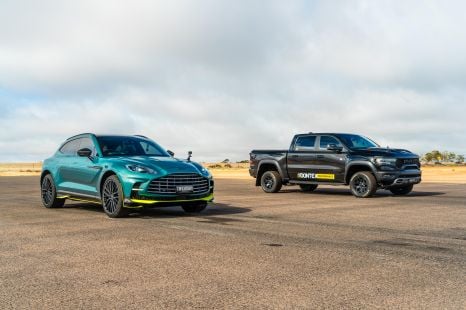

Paul Maric
1200hp RAM TRX vs Aston Martin DBX707 drag race
1 Month Ago
The Ford Ranger Plug-in Hybrid is finally here, and it has a lot to live up to if the Blue Oval wants to overcome new Chinese rivals.
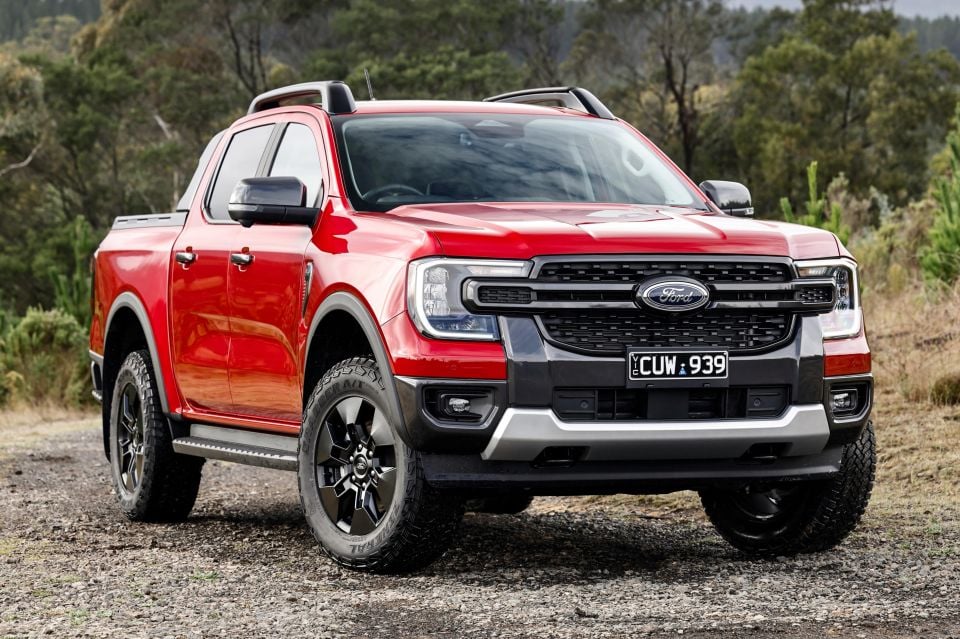
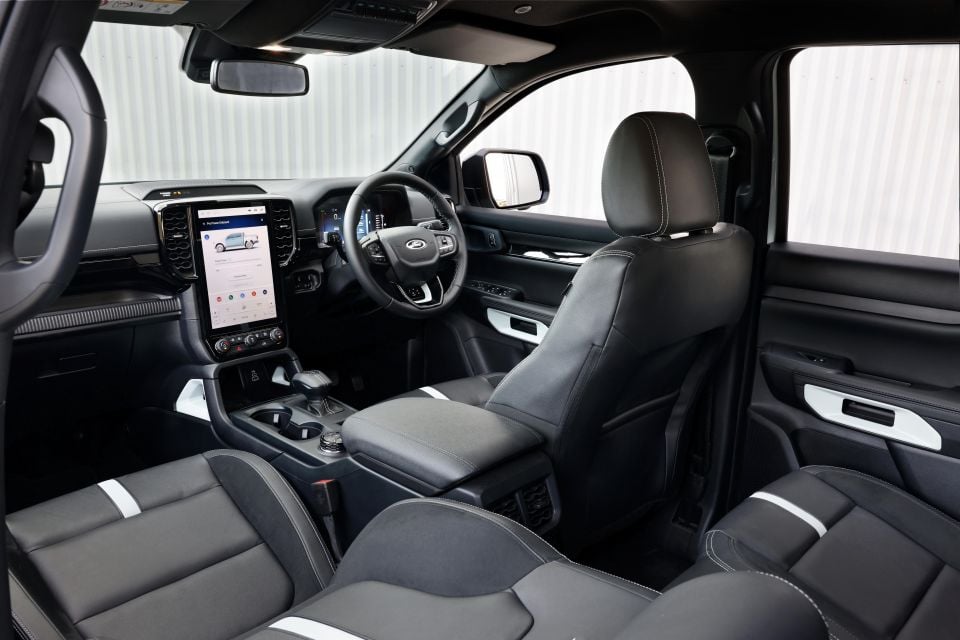

Quickly see how this car stacks up against its competition. Select any benchmark to see more details.
Where expert car reviews meet expert car buying – CarExpert gives you trusted advice, personalised service and real savings on your next new car.
Move over BYD and look out GWM: it’s Ford’s turn to play with the plug-in hybrid (PHEV) ute.
The past year has seen two PHEV utes take centre stage in Australia, both produced by Chinese manufacturers. These vehicles are, of course, the BYD Shark 6 and GWM Cannon Alpha PHEV – two segment-shakers in their own right.
BYD was first, bringing the large Shark 6 to Australian showrooms in the latter months of 2024. It arrived amidst BYD’s impressive ongoing product offensive, and immediately backed it up with a sharp sticker price under $60,000.
Cracks in the façade began to show early though, first evidenced in CarExpert’s pre-production drive and later confirmed by a second review, which highlighted off-road torque delivery and towing limitations. Attention then turned to GWM and its Cannon Alpha PHEV, which also now starts below $60,000.
Unlike the all-new Shark 6, GWM was able to fit a PHEV powertrain to the already-established Cannon Alpha while maintaining low-range gearing and locking differentials. That gave it an edge off-road and a higher towing capacity, though both continue to impress on sealed surfaces.

Finally came Ford. The Ranger has been Australia’s best-selling ute for some time, and last year was our nation’s favourite new vehicle, period. A PHEV powertrain to accompany its two turbo-diesel engines was confirmed as long ago as 2021 – though it’s now especially timely as penalties from Australian emissions regulations loom.
The Blue Oval already had a leg up with an Australian-developed, well-established ute platform, but eyebrows were raised when pricing was announced. Opening the range is the XLT PHEV, priced from $71,990 before on-roads – well above the Chinese competition have managed with larger, better-equipped vehicles.
Still, the brand promises a lot for the South African-built 2025 Ford Ranger PHEV, as it’s supposedly just as capable as its diesel counterparts. As such, Ford invited media to drive the Ranger PHEV across Victoria to test its on- and off-road capabilities, as well as tow heavy trailers on public roads as part of its local launch.
We’ve now had the opportunity to drive all three PHEV utes in Australia, which begs the question: has Ford justified the steep price tag, or has China done it better?
The Ranger PHEV starts at $71,990 before on-roads for the ‘base’ XLT – a middling variant in the model’s diesel lineup. It extends to $86,990 before on-roads for the PHEV-only Stormtrak, while the previously diesel-only Sport and Wildtrak trims are now available as PHEVs too.

Ranger XL
| Model | Price before on-roads |
|---|---|
| 2025 Ford Ranger XL 4×2 single-cab/chassis | $36,880 |
| 2025 Ford Ranger XL 4×2 Super-cab/chassis | $39,380 |
| 2025 Ford Ranger XL 4×2 double-cab pickup | $43,280 |
| 2025 Ford Ranger XL 4×4 bi-turbo single cab/chassis | $47,980 |
| 2025 Ford Ranger XL 4×4 double-cab/chassis | $48,980 |
| 2025 Ford Ranger XL 4×4 bi-turbo Super-cab/chassis | $50,480 |
| 2025 Ford Ranger XL 4×4 double-cab pickup | $50,880 |
| 2025 Ford Ranger XL 4×4 bi-turbo double-cab/chassis | $52,480 |
| 2025 Ford Ranger XL 4×4 bi-turbo double-cab pickup | $54,380 |
Ranger XLS
| Model | Price before on-roads |
|---|---|
| 2025 Ford Ranger XLS 4×4 bi-turbo double-cab pickup | $57,630 |
Ranger XLT
| Model | Price before on-roads |
|---|---|
| 2025 Ford Ranger XLT 4×2 bi-turbo double-cab pickup | $56,440 |
| 2025 Ford Ranger XLT 4×4 bi-turbo Super-cab pickup | $61,640 |
| 2025 Ford Ranger XLT 4×4 bi-turbo double-cab pickup | $63,640 |
| 2025 Ford Ranger XLT 4×4 V6 double-cab/chassis | $66,940 |
| 2025 Ford Ranger XLT 4×4 V6 double-cab pickup | $68,840 |
| 2025 Ford Ranger XLT 4×4 PHEV double-cab pickup | $71,990 |
Ranger Sport
| Model | Price before on-roads |
|---|---|
| 2025 Ford Ranger Sport 4×4 bi-turbo double-cab pickup | $66,140 |
| 2025 Ford Ranger Sport 4×4 V6 double-cab pickup | $71,340 |
| 2025 Ford Ranger Sport 4×4 PHEV double-cab pickup | $75,990 |
Ranger Wildtrak
| Model | Price before on-roads |
|---|---|
| 2025 Ford Ranger Wildtrak 4×4 bi-turbo double-cab pickup | $69,640 |
| 2025 Ford Ranger Wildtrak 4×4 V6 double-cab pickup | $74,840 |
| 2025 Ford Ranger Wildtrak 4×4 PHEV double-cab pickup | $79,990 |
Ranger Platinum
| Model | Price before on-roads |
|---|---|
| 2025 Ford Ranger Platinum 4×4 V6 double-cab pickup | $80,640 |
Ranger Stormtrak
| Model | Price before on-roads |
|---|---|
| 2025 Ford Ranger Stormtrak 4×4 PHEV double-cab pickup | $86,990 |
Ranger Raptor
| Model | Price before on-roads |
|---|---|
| 2025 Ford Ranger Raptor 4×4 3.0TT V6 double-cab pickup | $90,440 |
Its two rivals are both significantly cheaper. The sole BYD Shark 6 Premium variant, costs $57,900 before on-roads; while the GWM Cannon Alpha PHEV Lux is priced from $59,990 before on-roads, and the flagship Ultra costs $66,990 plus on-roads.
Cannon Alpha PHEV drive-away pricing varies between each state and territory, as well as between private buyers and ABN holders.
To see how the Ford Ranger stacks up against its rivals, use our comparison tool
Practically identical to any other Ranger, which is to say it’s well-presented and comfortable.
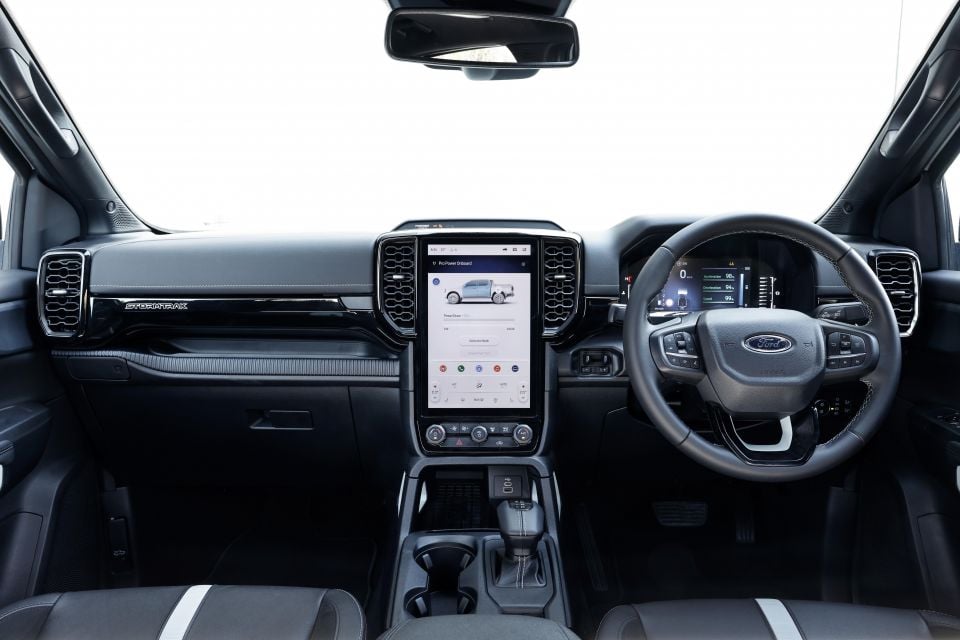
A key difference across the PHEV range compared to the diesels is that all four variants share a lot of the same tech. For example, you’ll still find a monolithic vertical touchscreen up front, except all PHEVs get the larger 12-inch unit instead of the cheaper 10.1-inch alternative.
Similarly, all PHEVs get the same 8.0-inch digital instrument display as seen across the majority of the Ranger lineup – though the combustion-powered Platinum and Raptor get a more sophisticated 12.3-inch unit.
The main items separating each PHEV grade boil down to upholstery and convenience solutions, which feel more thought out as you climb through the ranks.
The XLT gets cloth upholstery, while the Sport and Wildtrak get leather. The Stormtrak gets leather that’s accented with light grey elements – also seen on the steering wheel and air vents – matching the unique new Chill Grey paint option outside.
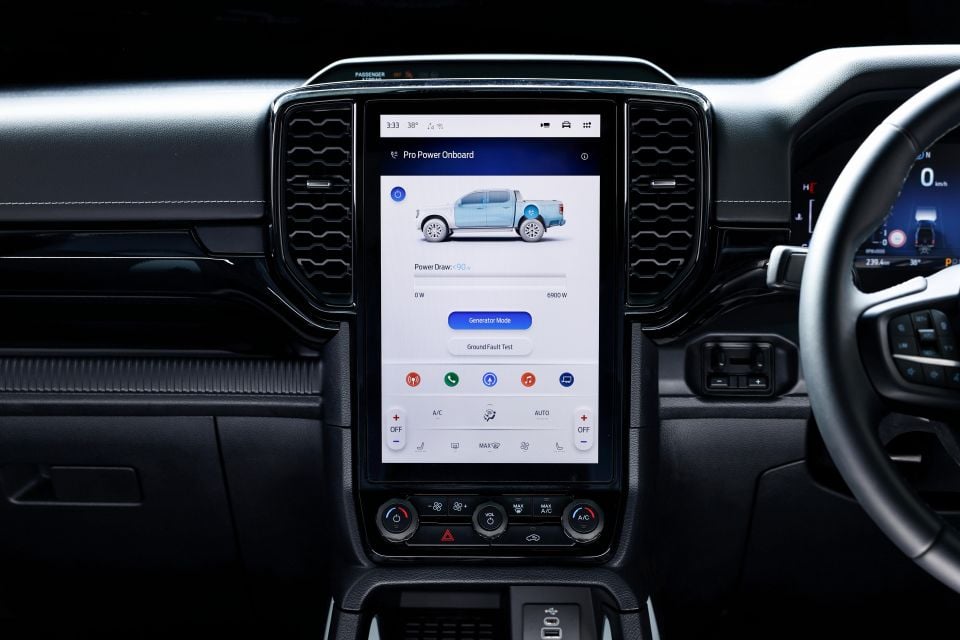
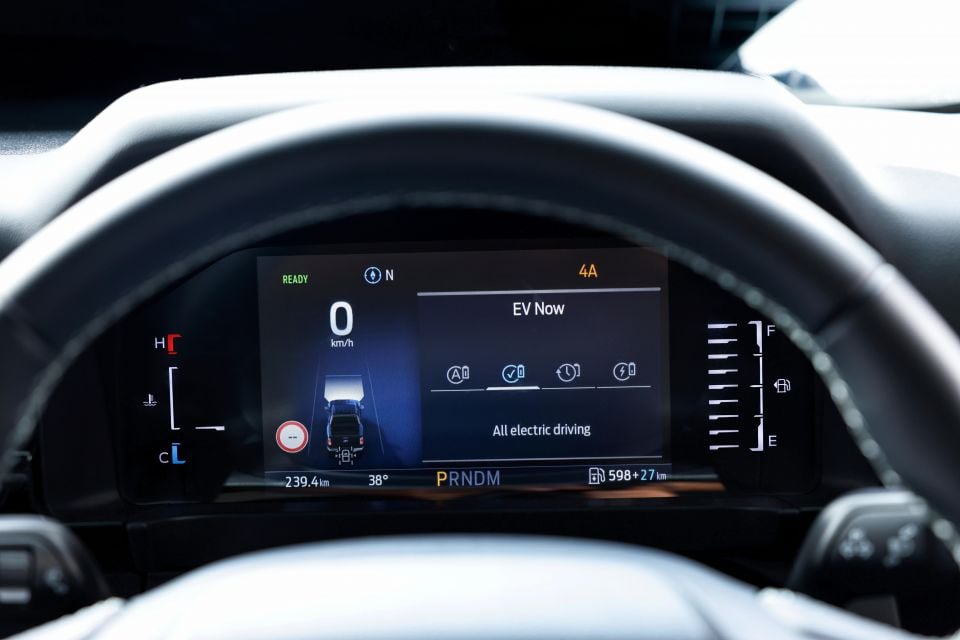
Granted, the Shark and Cannon Alpha are tough competition in terms of interior presentation, and truthfully the Shark feels the most premium of the three. The Ranger is still a cut above the Toyota HiLux and Isuzu D-Max though, while still retaining the impression of durability.
As for the infotainment screen, it retains most of the typical menus and graphical elements, but it’s no less convoluted to dive through. It doesn’t help that there are additional PHEV-specific menus either, in particular the charging and Pro Power Onboard displays we’ll detail later.
Elsewhere, you’ll find an always-on climate panel at the bottom, which works in conjunction with the few physical controls below to avoid complete screen reliance. It’ll continue to show when the exterior cameras are engaged and in other apps too, but doesn’t get in the way.
Below you’ll find the Ranger’s typical hardy plastic bits, characterised by the large handle-like pieces on either side. They’re still a little flimsy for our liking, and look cheap against the price of the ute – even with the light grey Stormtrak accents.
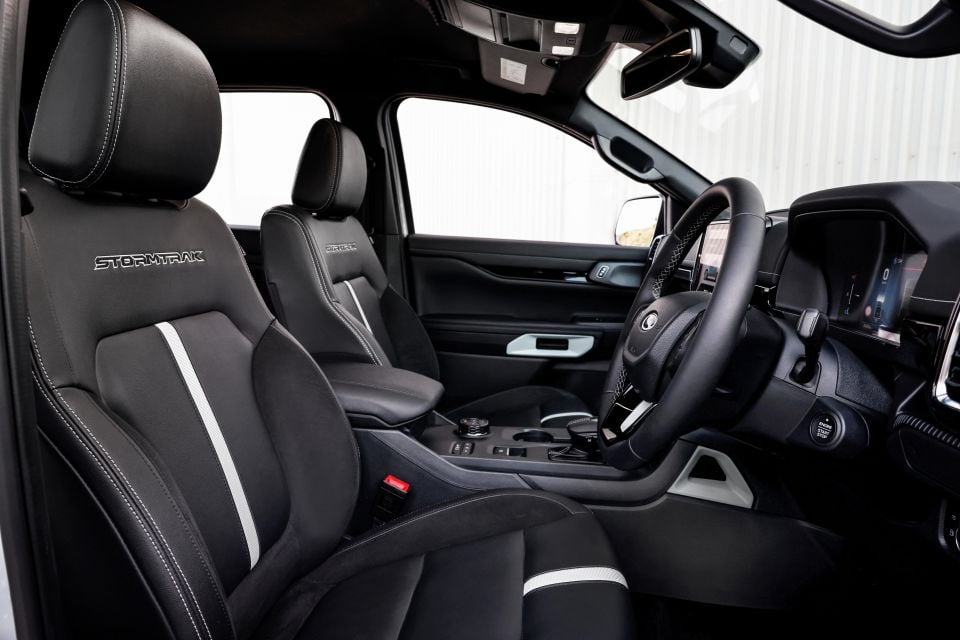

Inside the cubby is a wireless charging pad and individual USB-A and USB-C ports. The scratchy yet durable plastic continues along the centre console, which is where you’ll find two cupholders, the chunky gear selector, and a set of simple buttons and dials.
These are all related to drive settings, and are nearly identical to a diesel Ranger. The dial is still used to switch between off-road gearing and to operate Pro Trailer Backup Assist, neither of which has changed for PHEV models.
The small array of buttons is responsible for controlling drive modes, though PHEV models have gained an ‘EV’ button here. This toggles between the four electric driving settings, which change how charge is managed and delivered – we’ll delve into this in the driving section below.
Everything here is as practical as possible. You get a nicely sized central box for storage and a standard glovebox, though the Sport PHEV and up get a second dashboard storage compartment and the Ranger’s signature fold-out cupholders.
The Ranger’s utilitarian leanings don’t mean that Ford has compromised on comfort, either. The seats in all PHEV grades are supportive and comfortable for long-haul drives, while the seating position is strong with a good range of adjustment.


Powered adjustment is offered for the driver’s seat from the Sport up, while front passengers don’t get it until the Wildtrak. This is in keeping with diesel variants.
Similarly, the steering wheel feels nice in hand and offers good tilt and reach adjustment. It’s leather-wrapped across all PHEV grades, which is something you don’t get on many cheaper diesel Rangers.
It all makes for a pleasant place to be, something the Ranger has always done well. Adding to it is a bank of auxiliary switches fitted to the ceiling, a Stormtrak-standard item intended to unlock extra versatility from the factory.
In the padded outboard armrests are the Ranger’s discreet internal door handles, which are a neat solution if not a little confusing for new passengers. They at least make for a moment of entertainment to watch them try to figure it out.

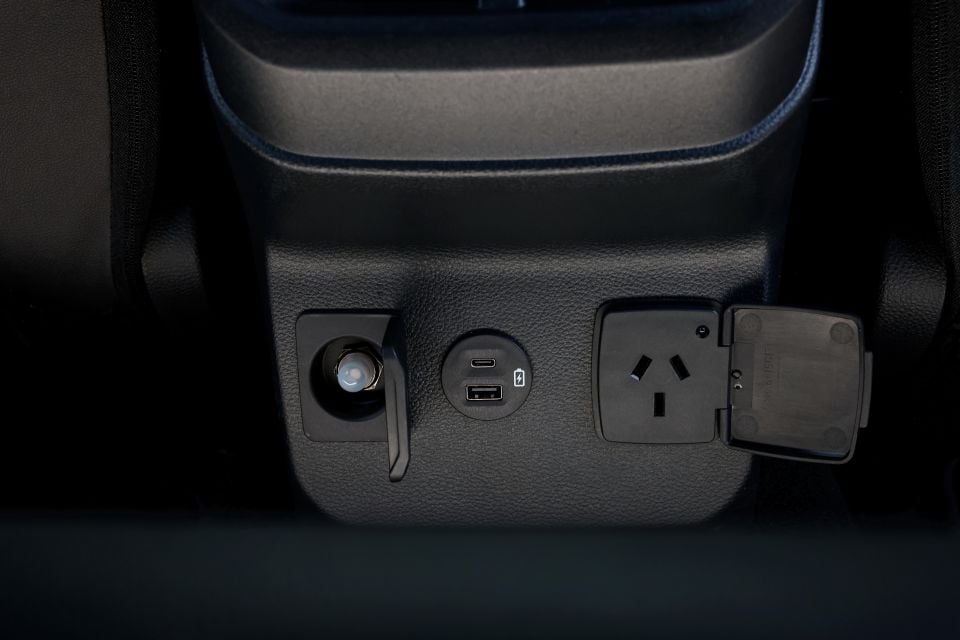
Side steps and the inclusion of handles on the A- and B-pillars make it easier to pull yourself in. This is also the case for the second row, which offers a decent amount of space.
The high roof offers strong head room, and leg room is acceptable regardless of where the front seats are positioned. With the driver’s seat in my average-height position, I had plenty of space from behind.
The seats here are flat but still comfortable enough, and they’re upholstered in the same leather-accented trim as found in the front – or cloth in the XLT.
There’s a fold-down centre rear armrest with cupholders, plus dual air vents ar the back of the centre console, though there’s no dedicated climate control panel. You’ll also find USB-A and -C ports, as well as a PHEV-specific 230V power outlet.
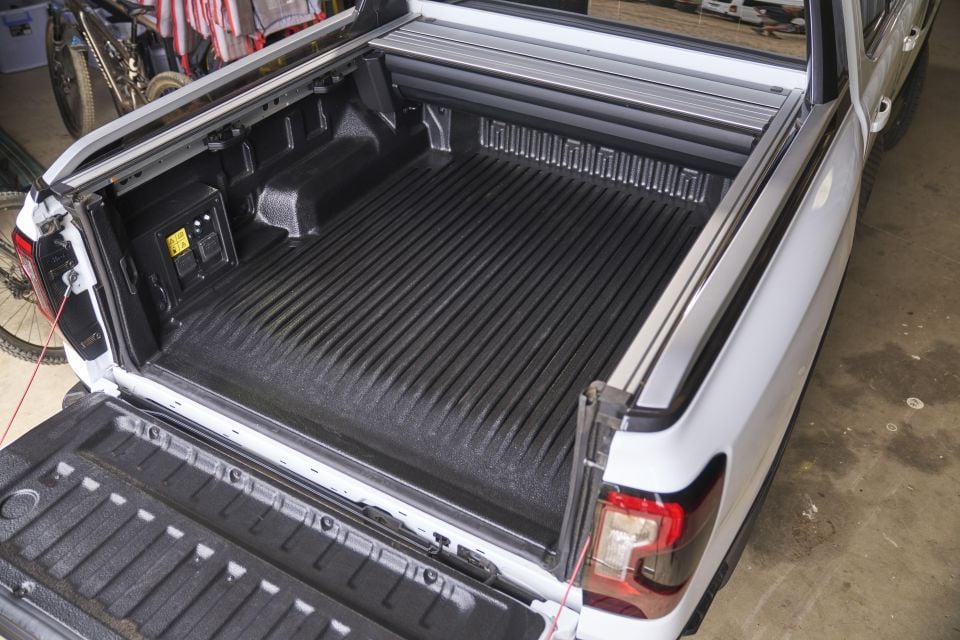
It’d be remiss of us not to mention the tub, and at a glance there’s not a lot different here. All PHEV trims get tailgate lift assist and a drop-in bedliner; while the Wildtrak gains a powered roller cover and the Stormtrak gets the otherwise optional Flexible Rack System as standard.
The big addition is a pair of 15A power outlets, which allow owners to plug electrical items into the vehicle to use it as a generator. Ford dubs this ‘Pro Power Onboard’ and it offers a total capacity of 6900W, which greatly exceeds the 3000W capacity of many traditional camping generators.
Additionally, this system can run on battery power alone with the vehicle off and locked, making for quiet campsite operation if need be. If battery charge depletes completely, the petrol engine will automatically start to keep everything running, and it can be used while charging.
Though the Ranger PHEV doesn’t support DC fast charging, it can be left locked with the engine running when in ‘EV Charge’ mode to idly charge its own battery. That’s a handy feature if you run out of battery in the sticks, but it could be considered a pollutant if left running overnight.

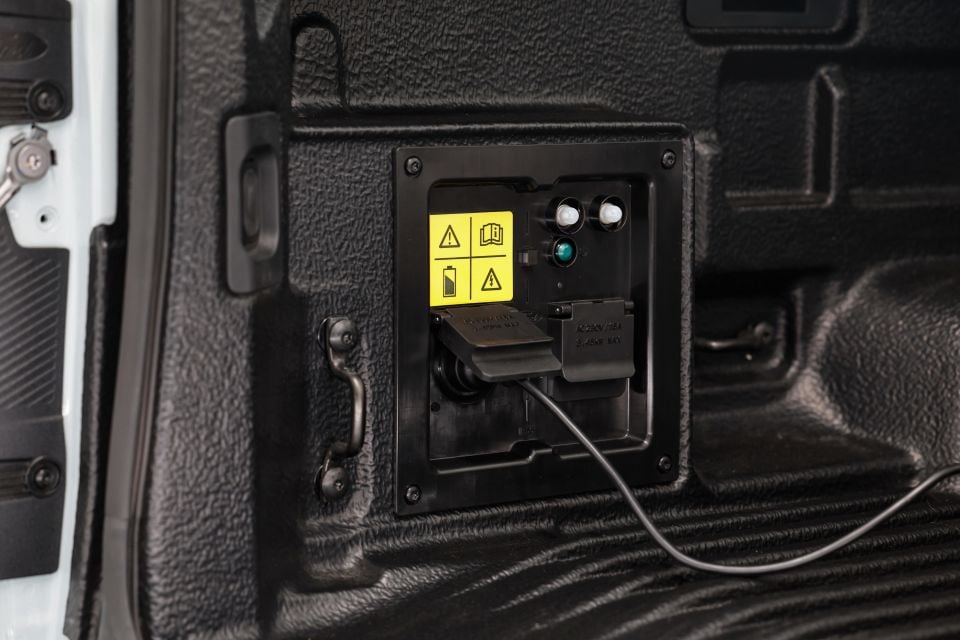
Those with a keen eye will notice there’s a bump at the back of the tub floor, which has been softened to still allow items to be slid in.
This bump is a result of the Ranger PHEV’s battery, which sits under the tub but is integrated into PHEV-specific chassis rails. Despite this packaging, Ford says owners shouldn’t try to fit a more tradie-oriented steel tray lest they face warranty issues, making the vehicle a little less hardy.
Still, you get a typically large Ranger tub, which is comparable to the Shark and Cannon Alpha despite being a smaller vehicle.
For context, a diesel Ranger Sport offers a tub that’s 1464mm long at the floor, up to 1520mm wide, and 525mm deep – shorter and narrower than the PHEV. The difference in depth is due to the aforementioned battery packaging, but Ford says it has maintained overall volume through the increased length and width.
| Dimensions | Ford Ranger PHEV |
|---|---|
| Length | 5350mm |
| Width | 2207mm |
| Height | 1871mm – 1883mm |
| Wheelbase | 3270mm |
| Tub length | 1638mm at floor, 1471mm at top |
| Tub width | 1584mm (1233mm between arches) |
| Tub depth | 498mm |
To see how the Ford Ranger stacks up against its rivals, use our comparison tool
Alongside the V6 and bi-turbo diesels is now a 2.3-litre four-cylinder turbocharged petrol engine mated with a 75kW electric motor. The EcoBoost-branded unit related to that found in several Ford products, including previous hot Focus models and the Ford Mustang pony car – albeit significantly detuned.

| Specifications | Ford Ranger PHEV |
|---|---|
| Engine | 2.3L 4cyl turbo-petrol |
| Engine outputs | 138kW / 411Nm |
| Peak electric motor outputs | 75kW |
| Peak system outputs | 207kW / 697Nm |
| Battery | 11.8kWh NMC li-ion – usable |
| Transmission | 10-speed Hybrid Transmission |
| Drive type | Full-time 4WD with low-range |
| Fuel economy (claimed) | 2.9L/100km |
| Electric energy consumption (claimed) | 18.7kWh/100km |
| Electric driving range (NEDC) | 49km |
| Fuel tank capacity | 70L |
| Fuel requirement | 91 octane unleaded |
| CO2 emissions (claimed) | 66g/km |
| Braked tow capacity | 3500kg |
| Gross vehicle mass (GVM) | 3500kg |
| Gross combination mass (GCM) | 6580kg |
| Kerb weight | 2527kg – 2692kg |
| Payload | 973kg – 808kg |
| Max. AC charge rate | 3.5kW |
While we didn’t get enough time in any one vehicle to record representative fuel economy figures, we did see numbers hovering around 5.5L/100km after an hour or two on the road. That makes it the most economical Ranger currently on sale by some margin.
Energy consumption was well into the low 20kWh/100km range, made worse when driving in dedicated electric vehicle (EV) modes. Fuel economy skyrocketed to around 15L/100km on a brief towing loop.
To see how the Ford Ranger stacks up against its rivals, use our comparison tool
The Ranger PHEV is genuinely very interesting – so much so that it’s almost difficult to know where to start.

For one, everyone knows the Ranger as a sturdy, work-ready diesel or a raucous turbocharged petrol Raptor, depending on your tax bracket.
It’s therefore odd to set off in a Ranger and hear nothing but a faint electric whirr, but that’s exactly the experience you get with the PHEV. Even having a small petrol motor in a Ranger feels strange, and it’s a little too loud under hard acceleration.
The powertrain’s behaviour differs greatly between each of the four EV modes, and there’s little overlap between them. The first – and likely the one used most – is Auto EV, which works to balance electric and petrol power depending on things like throttle input and load demands.
It seems this mode prioritises electric power, but it’s not afraid to start the engine either. We still think 10 gears is far too many even for this Ranger, because accelerating will have it shifting constantly.

Then there’s EV Now, which turns the Ranger PHEV into a pure EV. It’s quite impressive in its function, as it will never fire up the engine unless instructed to do so or the battery runs out of power, of course.
Even with the throttle planted in this mode, you’ll stay on pure electric power. You will get a pop-up on the dash asking if you want to turn the engine on, but this is easily ignored.
Granted, the Ranger PHEV is by no means quick in this mode, but it will get up to the posted speed limit eventually.
Auto EV is undoubtedly ideal if speed is what you’re after, and the ute is capable of decent kick when everything’s working together.
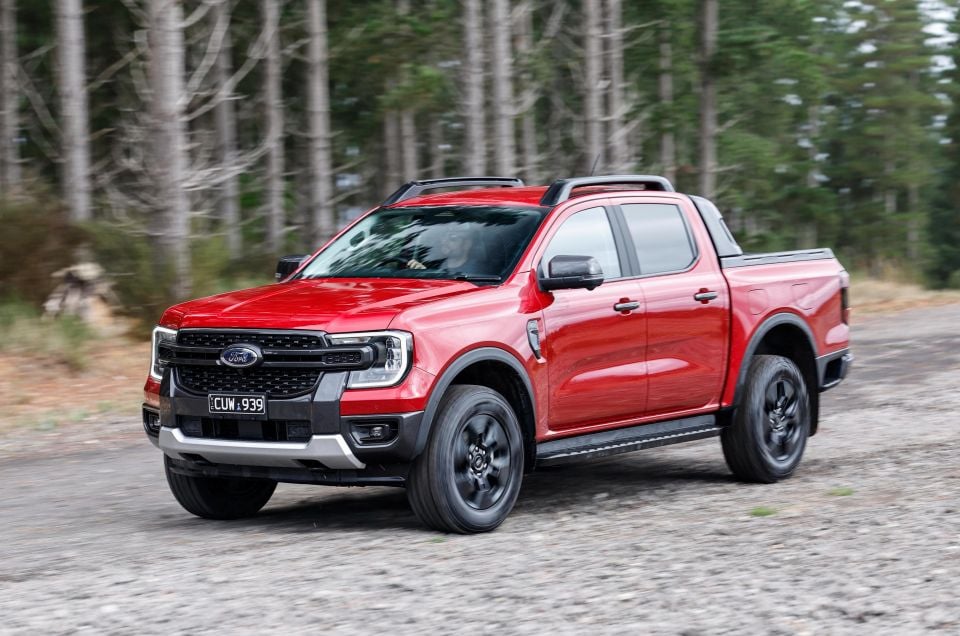
Where expert car reviews meet expert car buying – CarExpert gives you trusted advice, personalised service and real savings on your next new car.
Next is EV Later, which prioritises the engine to maintain the battery’s state of charge. This is ideal if you’re travelling and intend to use the ute to power appliances or tools at your destination, as you won’t waste any battery driving.
Finally, there’s EV Charge, which again utilises the engine, but this time to charge the battery while still powering the car.
This mode is particularly impressive, as we didn’t notice any meaningful drop in power and managed to charge from around 75 to 95 per cent over roughly 70km.
There’s also some degree of regenerative braking to help, but it doesn’t slow the Ranger down when coasting. Instead, it subtly activates under braking, and after coming to a stop you’ll get a ‘score’ reflecting how much of the vehicle’s potential energy you recovered.

Ford itself says this EV Coach system can make for an energy-saving game on the road, and we agree – it’s satisfying to see 100 per cent pop up, and it encourages more efficient driving.
All together these settings are well-calibrated, which means the Ranger PHEV is easy to drive regardless of whether you’re prioritising the engine or the battery. Its confident and compliant ride is also a reminder of the prowess of the Ranger’s Australian-developed platform underneath.
That means that despite the tweaked ride and chassis demands that come with a PHEV – particularly the heavy battery at the rear – this still rides as confidently as ever.
It manages small bump jitters well, and its steering is direct and nicely weighted. Similarly, its on-road safety systems are all well-calibrated, but the standard all-terrain tyres fitted to some variants are understandably prone to understeer.
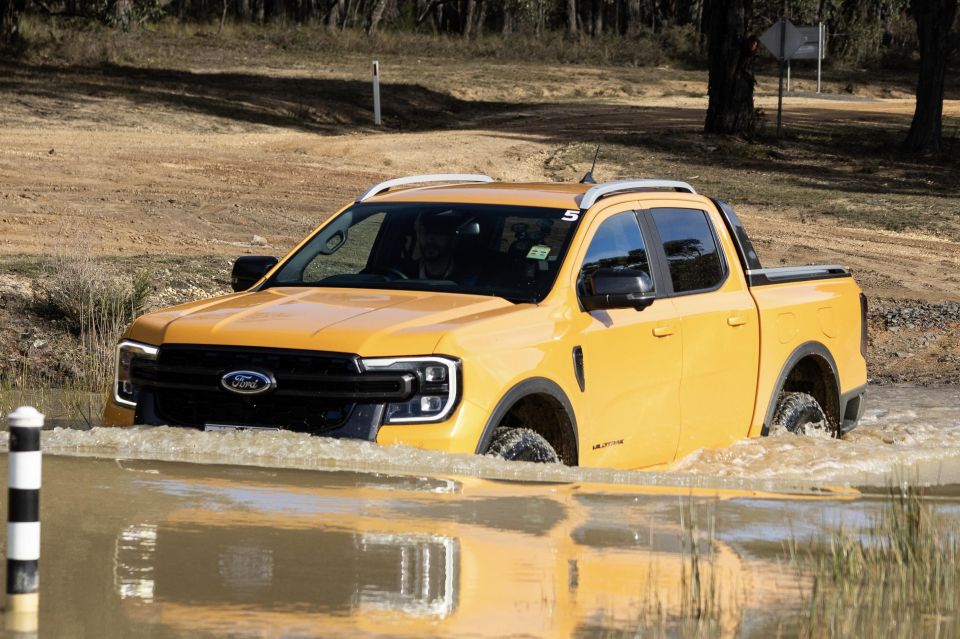
A limitation for the Ranger PHEV compared to diesel versions, however, is towing. It still boasts a segment-standard 3.5-tonne capacity, but the engine feels particularly strained when trying to haul anything above 2.0 tonnes.
While it’s certainly still capable, it’s by no means comfortable. Towing will also require both the engine and motor to be active, eating aggressively into fuel economy. But it at least retains driver assist and cruise control functions alongside Ford’s lighter-touch reversing assistant.
That aside, the Ranger PHEV’s off-road capability is especially impressive. Ford boasts that it retains all of the systems fitted to the diesel Ranger, and in practice they all seem to work as well as they ever did.
Four-wheel drive and low-range gearing are still standard, though the latter can’t be used in any of the EV drive modes.
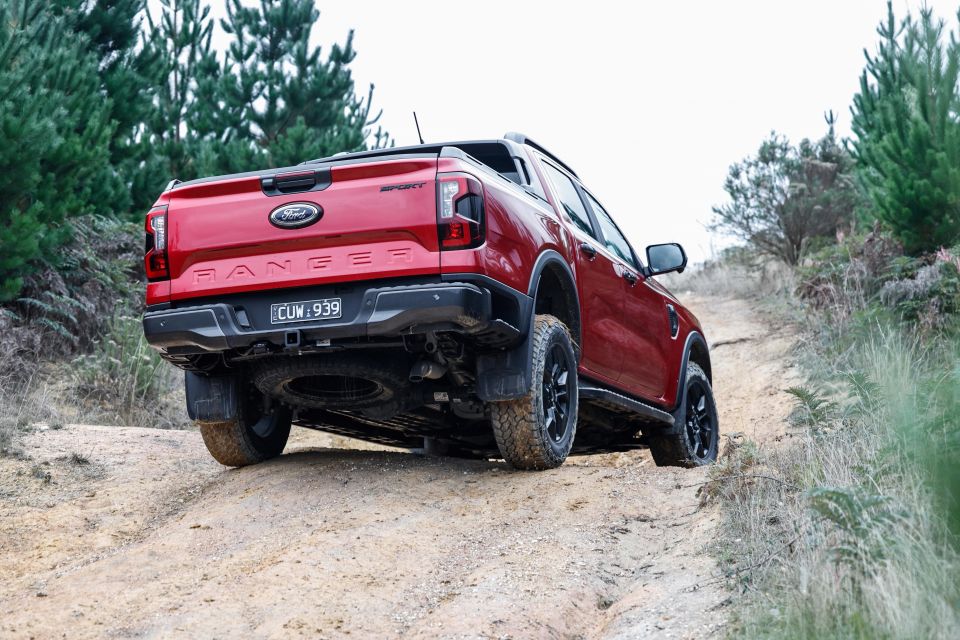
Its rear differential lock, however, can be engaged while driving as an EV, and the Ranger does surprisingly well in this mode once the paved road ends.
The e-motor’s instantaneous torque delivery means it can climb most steep, rocky hills while keeping the engine asleep – even when the balanced Auto EV mode is selected. You’re unlikely to get properly stuck too, as all the off-road modes on hand give you plenty to work with.
As a benefit, the battery is protected by its position above the rear axle, while the vehicle still gets underbody plating that protects its steering components, sump, and transmission.
All that, and you still get a ground clearance of more than 215mm, and a wading depth of 800mm. That makes it a versatile ute, and one that’s not limited by certain environments or underdone tech.

| Off-road dimensions | Ford Ranger PHEV |
|---|---|
| Track front and rear | 1630mm |
| Ground clearance | 215mm – 228mm |
| Approach angle | 28.9º – 30.2º |
| Departure angle | 23.9º – 24.7º |
| Ramp breakover angle | 19.6º – 20.6º |
| Wading depth | 800mm |
To see how the Ford Ranger stacks up against its rivals, use our comparison tool
There are now eight variants of Ranger available in Australia. XLT, Sport, and Wildtrak can be had with both diesel and PHEV powertrains, while Stormtrak is PHEV-only.
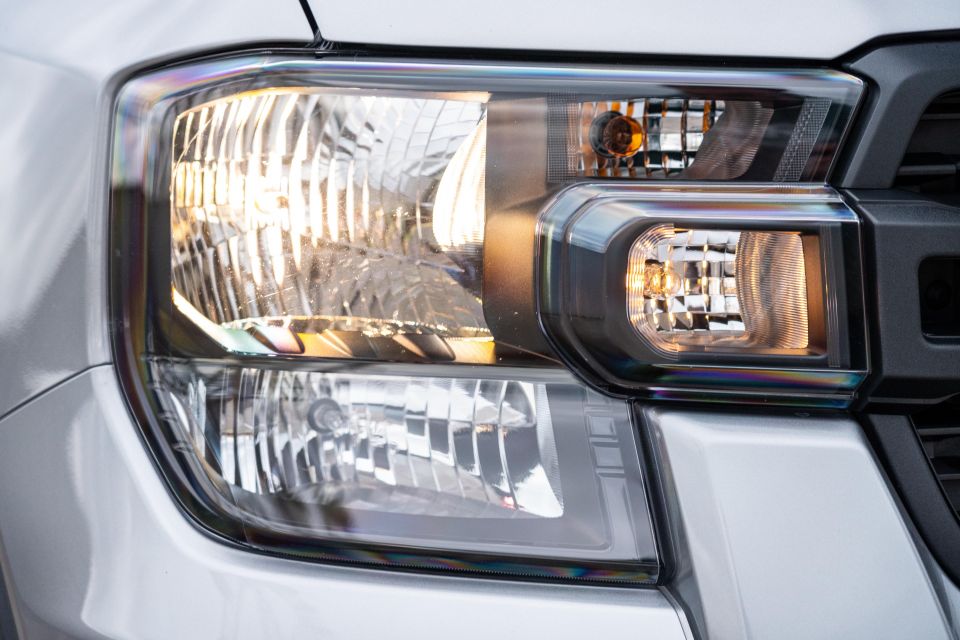


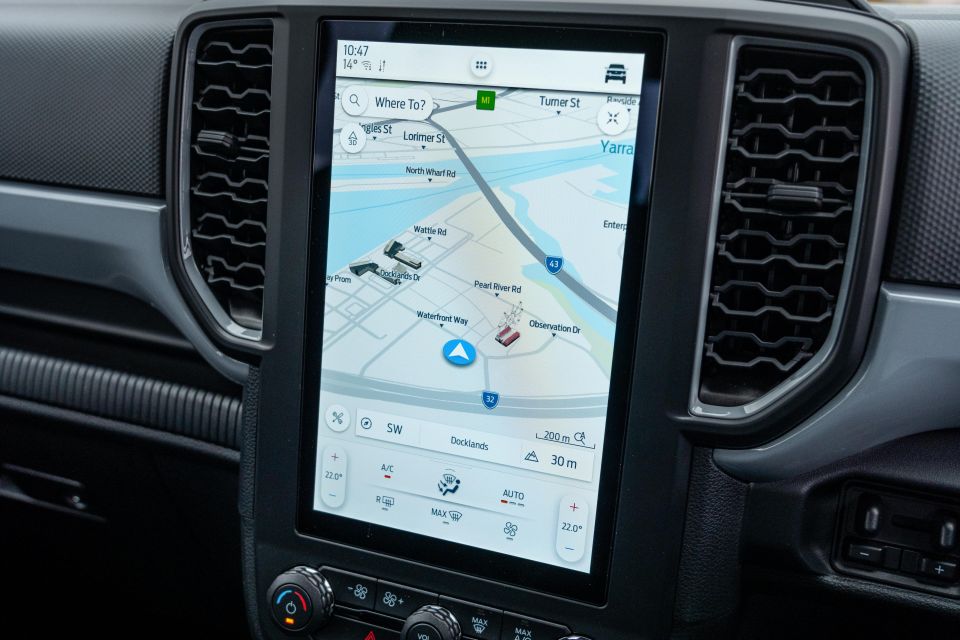
2025 Ford Ranger XL standard equipment highlights:
Ranger XLS:
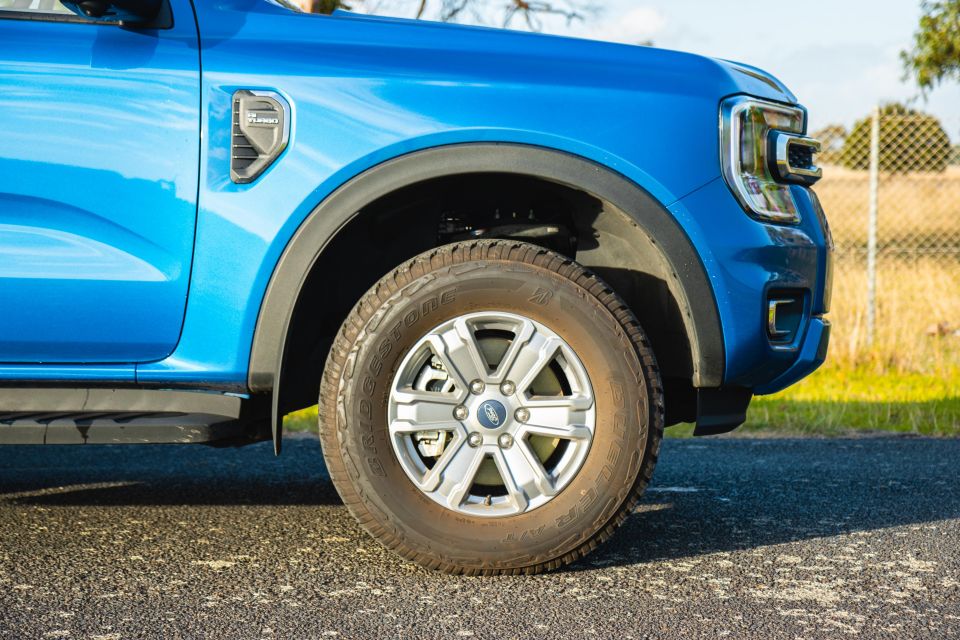

Ranger XLT adds:
Note: Acoustic windscreen doesn’t feature on XLT and above.
Ranger Sport adds:
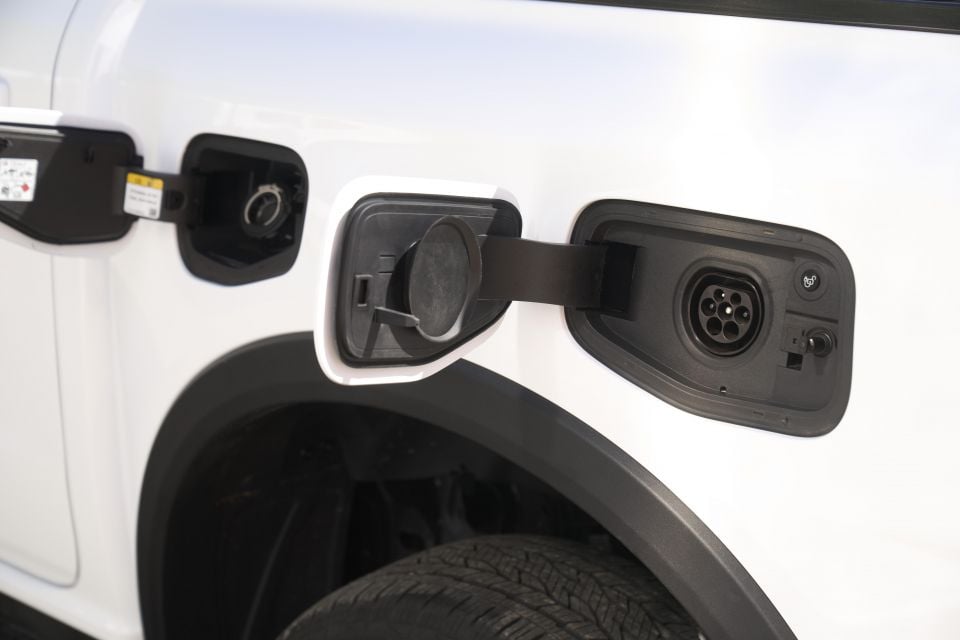
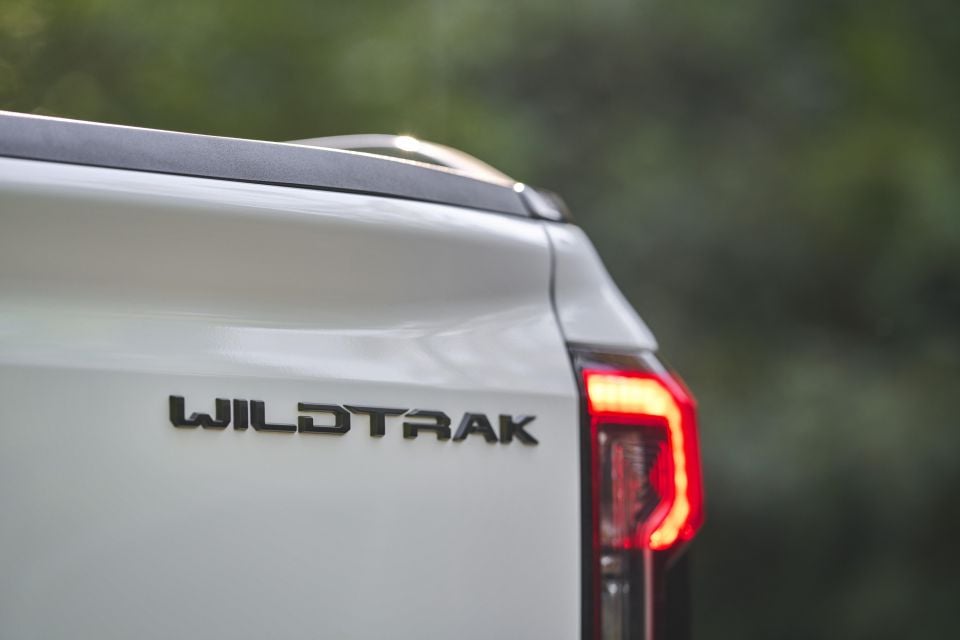
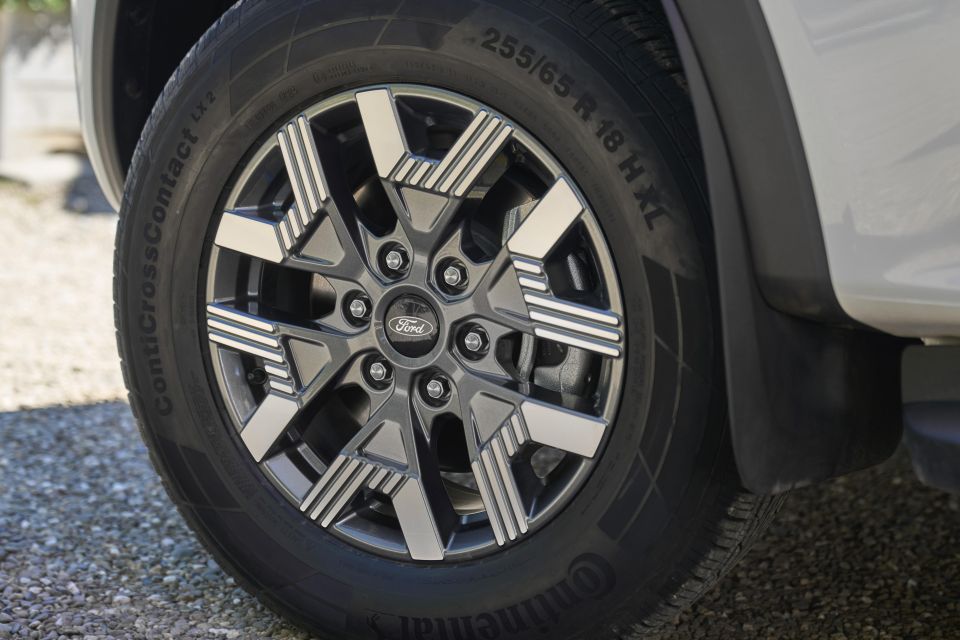

Ranger Wildtrak adds:
Ranger Platinum adds (over Wildtrak):
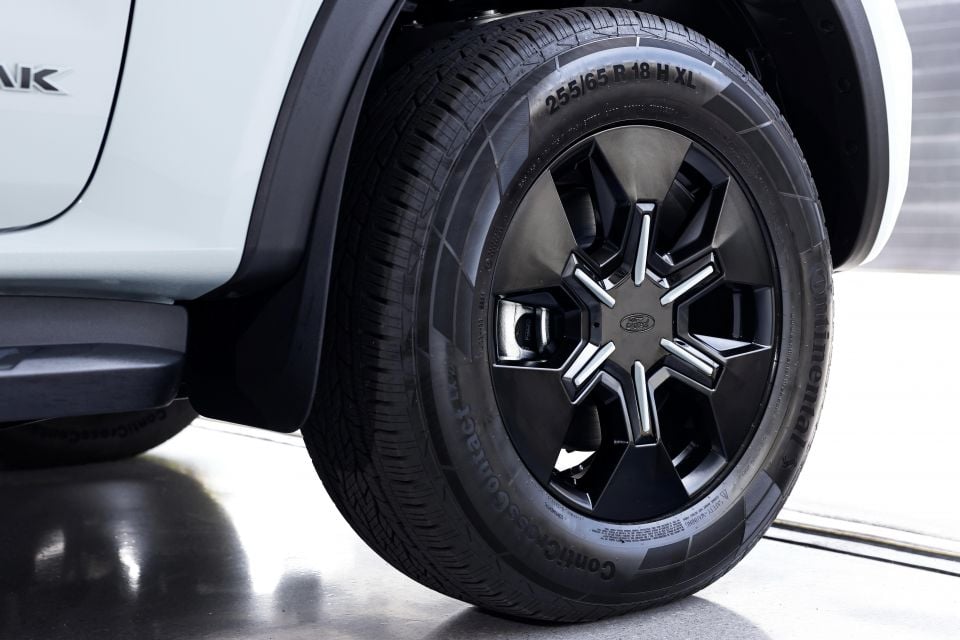
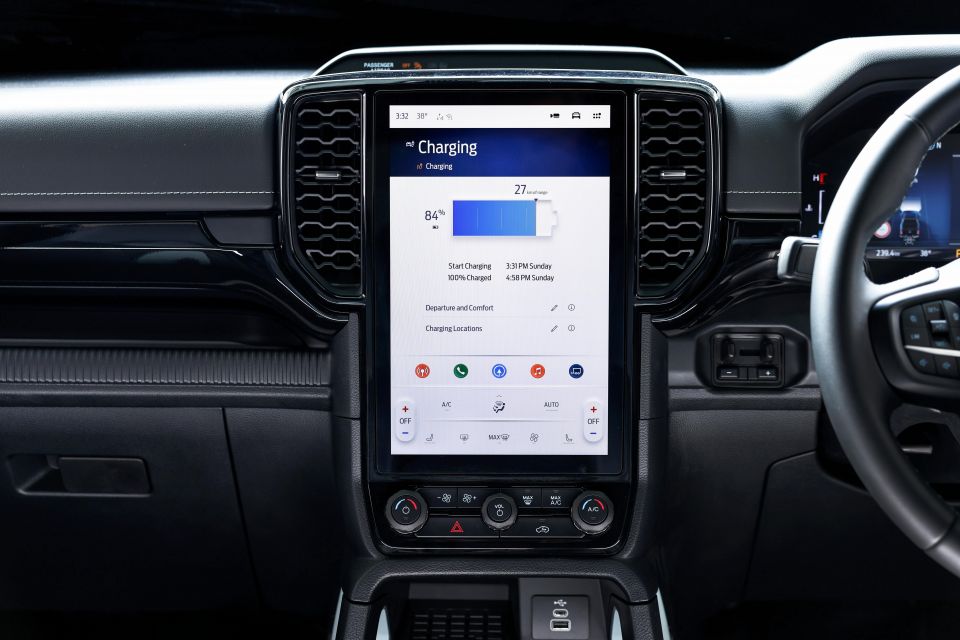
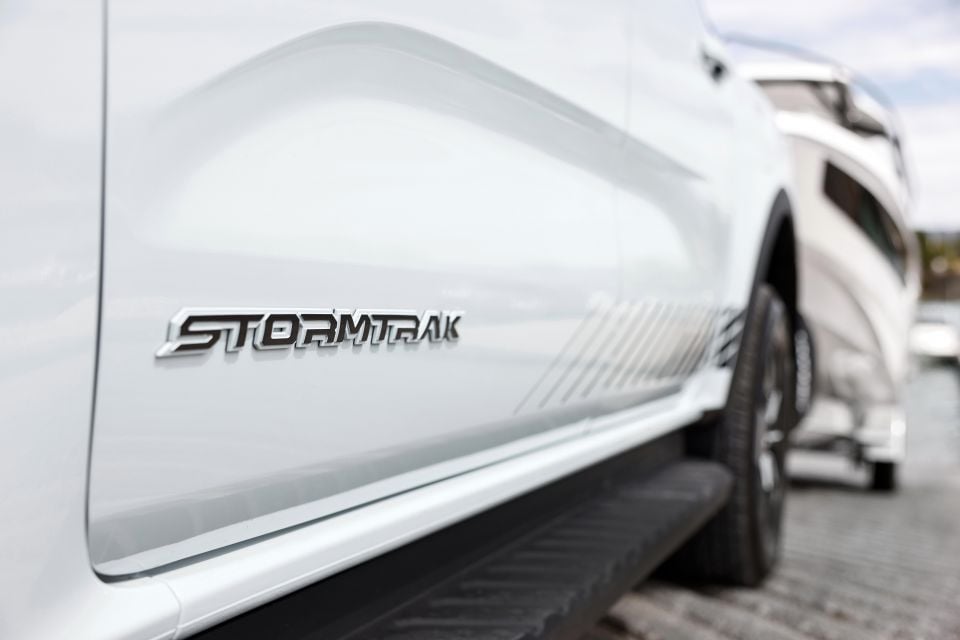

Ranger Stormtrak adds (over Wildtrak):
Ranger Raptor adds (over Wildtrak):
To see how the Ford Ranger stacks up against its rivals, use our comparison tool
A number of packages and single-item options are available across the range, depending on variant.
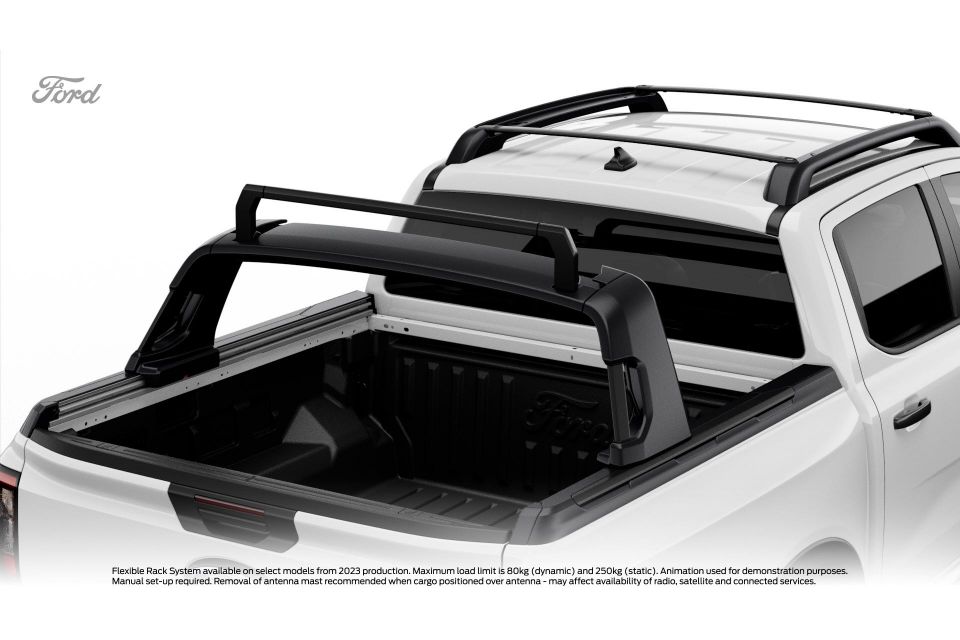
The 17-inch Steel Wheel Pack (for XL 4×4 models, $900) adds:
The Towing Pack (XL, $1900) adds:
The Wildtrak Premium Pack ($2000) adds:
The 20-inch Wildtrak Wheel Pack ($750) adds:
The Touring Pack (XLT and Sport 4×4 pickup only, $1650) adds:
The Technology pack (Sport PHEV only, $950) adds:
The Adventure pack (XLT, Sport and Wildtrak PHEV, $500) adds:
Other options include:
To see how the Ford Ranger stacks up against its rivals, use our comparison tool
While the diesel Ranger lineup boasts a five-star ANCAP safety rating, that doesn’t currently apply to PHEV variants. This is also the case with the flagship Raptor.

2025 Ford Ranger safety equipment highlights:
Ranger XLS adds:
Ranger XLT adds:
Ranger Sport PHEV adds (over XLT PHEV):
Ranger Wildtrak PHEV adds (over Sport PHEV):
The optional Touring Pack adds a surround-view camera, while the Technology Pack adds a surround-view camera and pro trailer back-up assist for Sport PHEV only.
To see how the Ford Ranger stacks up against its rivals, use our comparison tool
Ford Australia backs the Ranger with a five-year, unlimited-kilometre warranty, and the PHEV’s high-voltage battery is additionally covered for eight years or 160,000km.
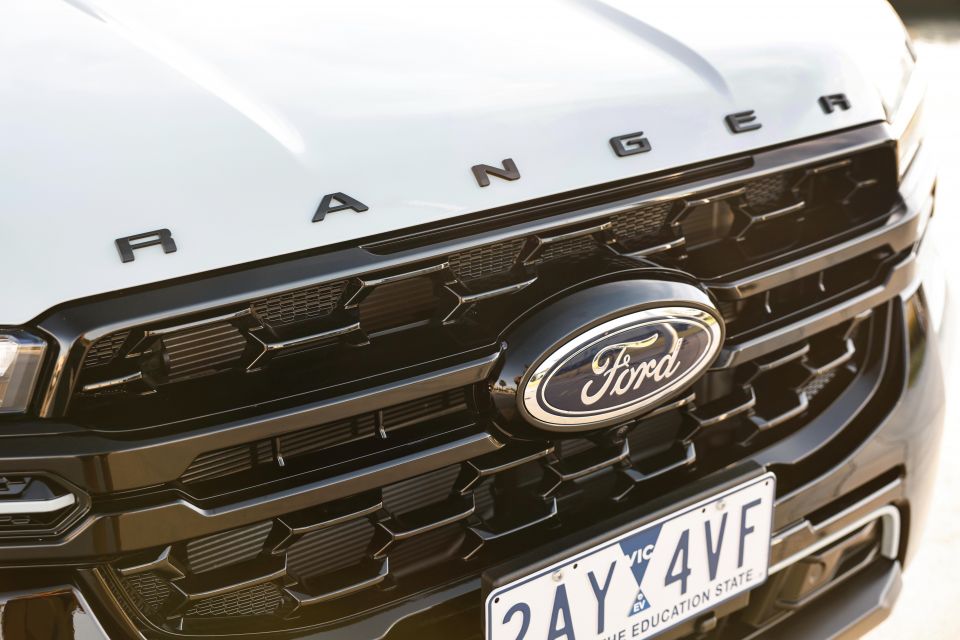
| Servicing and Warranty | Ford Ranger PHEV |
|---|---|
| Warranty | 5 years, unlimited kilometres |
| High-voltage battery warranty | 8 years, 160,000km |
| Roadside assistance | 12 months, then service-activated up to 7 years |
| Service intervals | 12 months or 15,000km |
| Capped-price servicing | 5 years, $399 each |
| Total capped-price service cost | $1995 |
For context, a Ranger 4×4 V6 diesel will set you back $2700 over five years, while a 4×4 bi-turbo diesel will cost $2565.
To see how the Ford Ranger stacks up against its rivals, use our comparison tool
For such a bold reimagining of the Ranger formula, Ford has done well to capture the best of its ute and combine it with more efficient electrified driveline tech – it won’t be for everyone though.
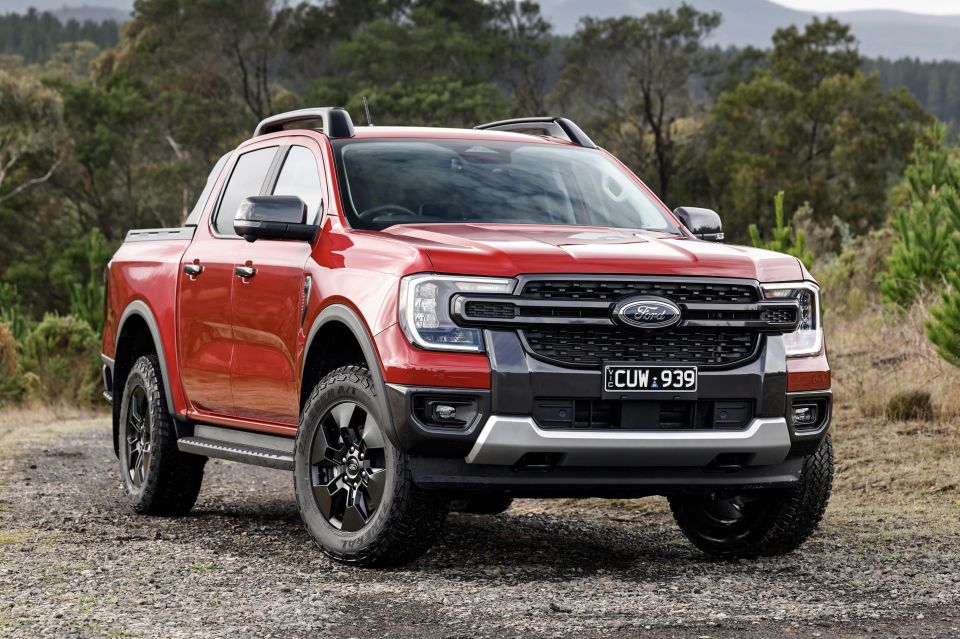
Try as Ford will, but the Ranger PHEV isn’t a car for tradies. The recommendations against a steel tray will be a turn-off for those using the ute in rough environments like construction sites, not to mention the fact that it costs a lot more than many will be able to afford.
Further, even with the ability to charge itself, it’s unreasonable to expect a tradie to always take the time to charge it, especially when time is money. Its overall range is a decent workaround, but it can’t beat the mindless ease of a diesel.
The lack of DC fast charging also seems a turn-off against the competition, but Ford wants owners to think of it as charging their phone every night – unlikely to be an option if you’re parking it at a job site or somewhere remote.
Then there’s the conflict with the diesel range, which is confusing with mismatched standard equipment and pricing – likely due to differences between South African Rangers and Thai-sourced diesel models, as well as added costs like import tariffs that come with the PHEV’s South African production.
All told, the plug-in Ranger is the best of a small bunch when it comes to all-rounder PHEV utes.

It comfortably outdoes the Shark for off-road performance, even if its cabin feels arguably cheaper. The Cannon Alpha is also strong off-road, but it lacks the same on-road finesse and tech refinement that Ford has honed into the Ranger.
A price premium over diesel alternatives is to be expected, and the Ranger was already fairly expensive for XLT dual-cabs and up. The standard features fitted to the $70,000+ XLT PHEV, like halogen headlights and cloth seats do sour the taste; suggesting the Sport PHEV might be the pick of the bunch.
That’s despite the Sport occupying a grey area between XLT and Wildtrak in the diesel range, which again points to those misaligned trim level placements.
If a single-cab-chassis Ranger PHEV could be concocted, it would do wonders to open up the powertrain to budget-minded buyers wanting to branch away from diesel, and create a whole new genre of PHEV ute below larger and more lifestyle-focused Chinese rivals.
As it stands, the Ranger PHEV avoids true ‘lifestyle ute’ status, presenting a well-considered and thoughtful effort from Ford to produce a new vehicle that should meet the expectations of efficiency-minded dual-cab buyers without undermining diesel alternatives.
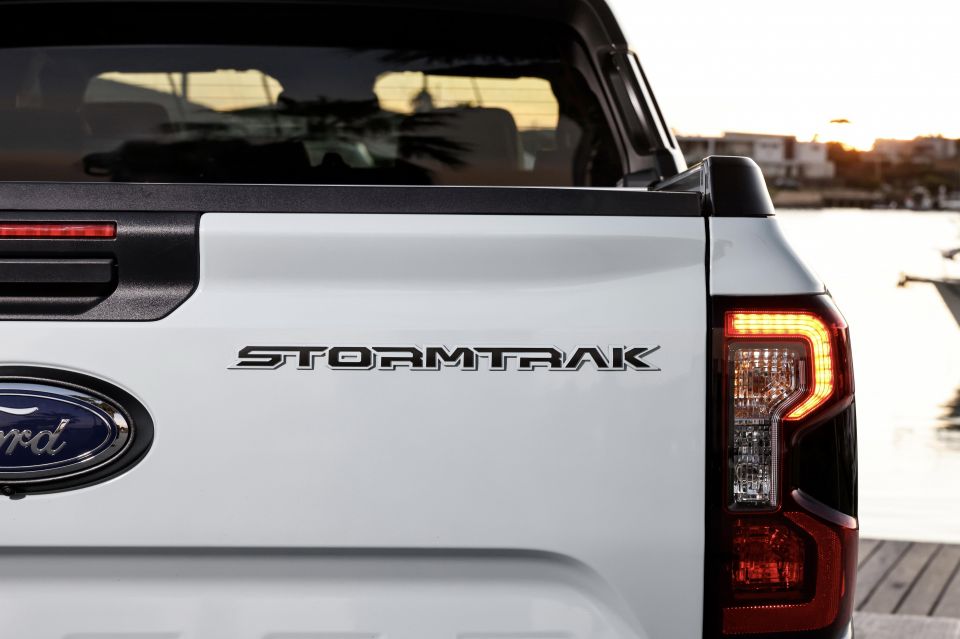
Interested in buying a Ford Ranger? Let CarExpert find you the best deal here
Click the images for the full gallery
Where expert car reviews meet expert car buying – CarExpert gives you trusted advice, personalised service and real savings on your next new car.
Max Davies is an automotive journalist based in Melbourne, Australia. Max studied journalism at La Trobe University and stepped into the automotive world after graduating in late 2023. He grew up in regional Victoria, and with a passion for everything motorsport is a fan of Fernando Alonso.


Paul Maric
1 Month Ago
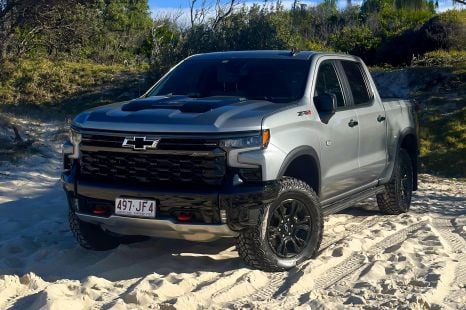

William Stopford
1 Month Ago
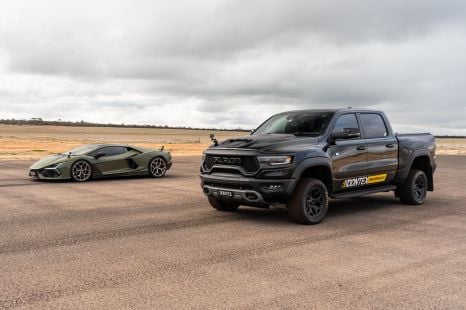

Paul Maric
21 Days Ago


Max Davies
15 Days Ago
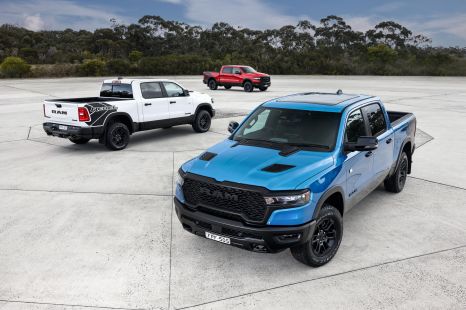

William Stopford
11 Days Ago
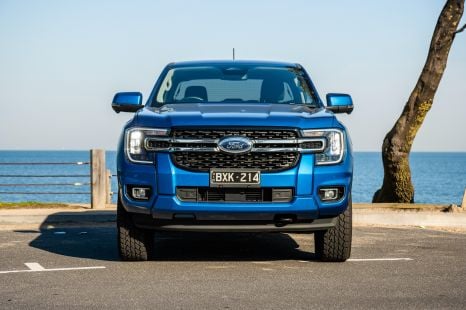

William Stopford
10 Days Ago